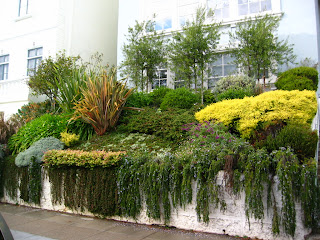We all know Stanford University is the pinnacle of knowledge west of the Atlantic Ocean. But while we might expect binary trees, expression trees and one particularly silly mascot, did you know the University's founder also planned a great arboretum that would be a veritable "zoo for trees," taking advantage of the region's moderate climate to grow rare and notable species from every corner of the globe?
Unfortunately, what remains in the original arboretum space planned by Frederick Law Olmsted are mostly eucalyptus and oak species as well as the palms on eponymous Palm Drive and elsewhere. The oaks are native, explicitly protected by Senator Stanford; the eucalypts were planted as fast-growing "nurse trees" to offer shade to tender exotic transplants while they established, then be removed.
As the Stanford News Service reports, in the financial crisis following the Senator's untimely death "the arboretum was neglected. Most specimen trees failed, while the heartier eucalypts flourished." When backers revived plans for the arboretum, they "upheld Stanford's vision for maintaining wooded open space, but departed from his notion of trees from around the world in favor of species native to California."
Nevertheless, today Stanford hosts a remarkable diversity of not only trees but also shrubs, vines, grasses and native plants, catalogued and annotated online in a tremendous resource. Horticultural notes, leaf silhouettes, tree walk maps, and more await you. Whether or not you've seen it on campus, this is a quick and gorgeous go-to guide for identifying, or selecting, that perfect specimen.

